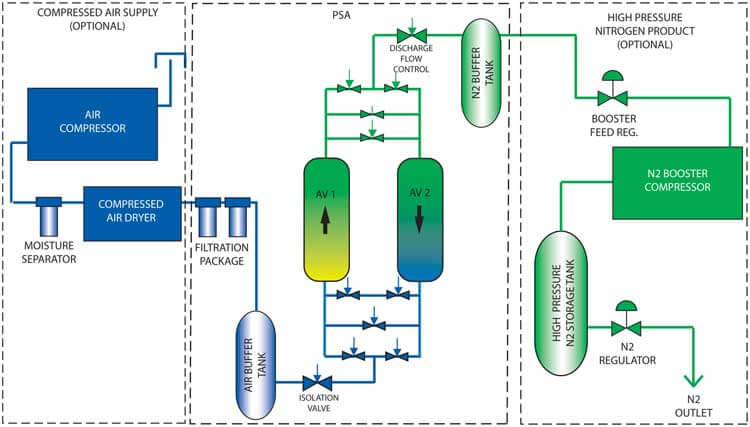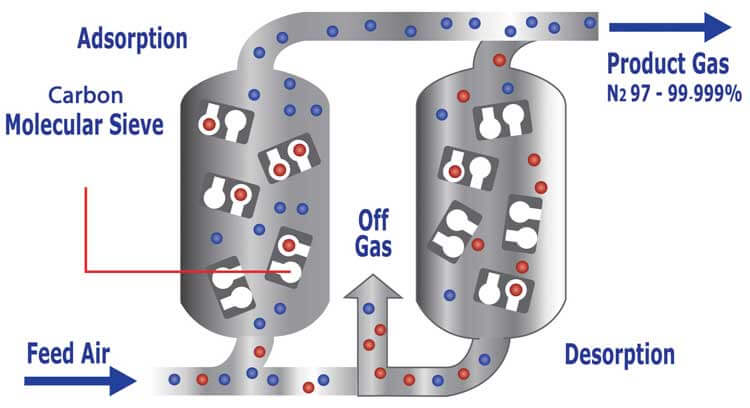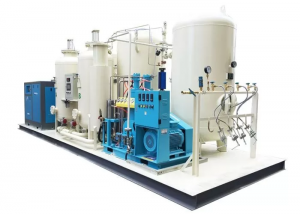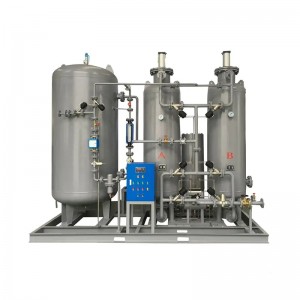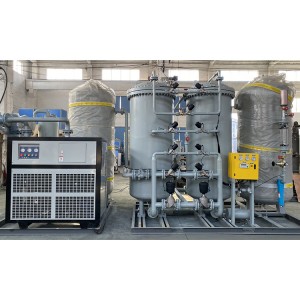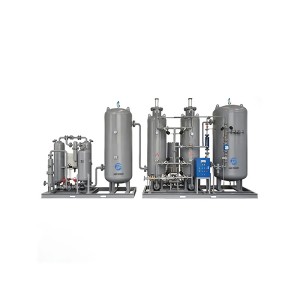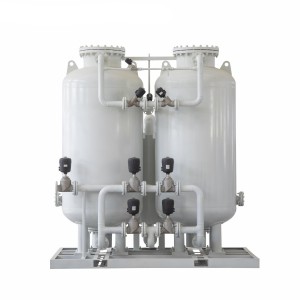Stainless steel nitrogen making machine in pharmaceutical industry
Why Choose Sihope for your PSA Nitrogen Generator Requirements:
RELIABILITY / EXPERIENCE
- The key to making the investment in Nitrogen Generation equipment is to be certain you are purchasing from a dependable company. Sihope has thousands of systems installed and operating worldwide.
- Sihope has one of the largest product portfolios on the market with over 50 standard models to choose from, and purities up to 99.9995% and flow rates to 2,030 scfm (3,200 Nm3/h)
- Quality is assured and maintained through ISO-9001 certified design and manufacturing facilities.
COST SAVINGS
- Cost saving of 50% to 300% when compared to bulk liquid supply, dewar, and Nitrogen cylinders
- Continuous supply, will never run out of Nitrogen
- No complicated supply contracts with ever escalating charges
SAFETY
- No safety or handling issues associated with bulky high pressure cylinders
- Eliminates the dangers of cryogenic liquids
Typical System Configuration
System Specification
- Sihope can offer complete turn-key system design, including all system components and design drawings. Our technical teams work directly with our clients to specify and install systems to our customer’s exact specifications. Sihope has a full service team ready 24 / 7 to answer any question you may have.
Technology
How a Pressure Swing adsorption (PSA) system works:
Sihope ® Nitrogen PSA Generator Systems use the basic principle of passing air over a bed of engineered adsorbent material, which bonds with oxygen, leaving a rich stream of nitrogen gas to exit.
The adsorption separation is accomplished by the following process steps:
- FEED AIR COMPRESSION AND CONDITIONING
The inlet (ambient) air is compressed by an air compressor, dried by an air dryer, and filtered, before entering the process vessels.
- PRESSURIZATION AND ADSORPTION
The pre-treated and filtered air is directed into a vessel filled with Carbon Molecular Sieve (CMS) where the oxygen is adsorbed preferentially in the CMS pores. This allows concentrated nitrogen, with an adjustable purity, (as low as 50 ppm O2) to remain in the gas stream and flow out of the vessel. Before the full adsorption capacity of the CMS is reached, the separation process interrupts the inlet flow, and switches to the other adsorber vessel.
- DESORPTION
The oxygen-saturated CMS is regenerated (the adsorbed gases are released) by means of a pressure reduction, below that of the previous adsorption step. This is achieved by a simple pressure release system where the exhaust (waste) gas stream is vented from the vessel, usually through a diffuser or silencer and back into safe surrounding atmosphere. The regenerated CMS is refreshed and can now be used again for the generation of nitrogen.
- ALTERNATING VESSELS or SWING
Adsorption and desorption should take place alternately at equal time intervals. This means that the continuous generation of nitrogen can be achieved by using two adsorbers; while one is adsorbing, the other is in regeneration mode; and switching back and forth, provides for a continuous and controlled flow of nitrogen.
- NITROGEN RECEIVER
Constant nitrogen product flow and purity is ensured by a connected product buffer vessel that stores the nitrogen output. This can be designed for nitrogen purities up to 99.9995% and pressures up to 150 psig (10 bar).
- NITROGEN PRODUCT
The result product is a constant stream of On Site produced, high purity Nitrogen, at a cost significantly below the price of liquid or bottled gases.




